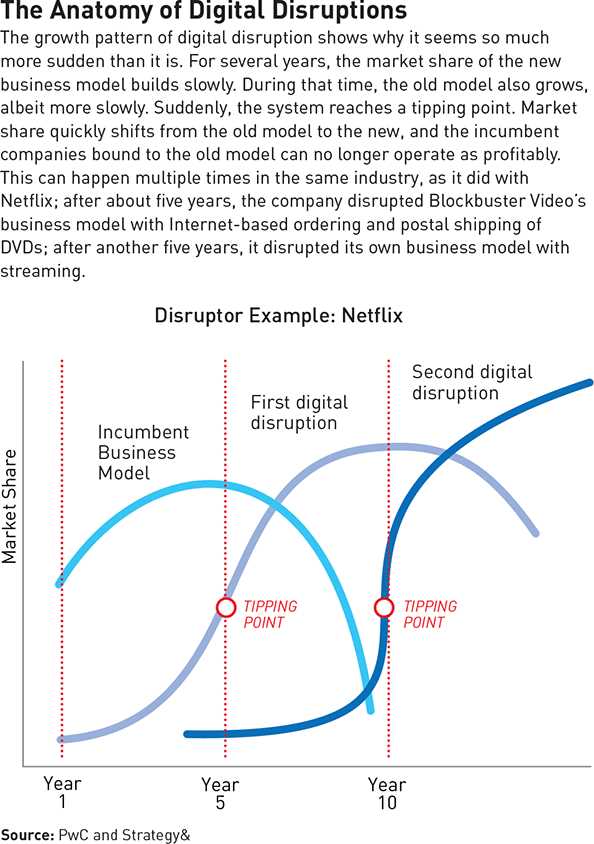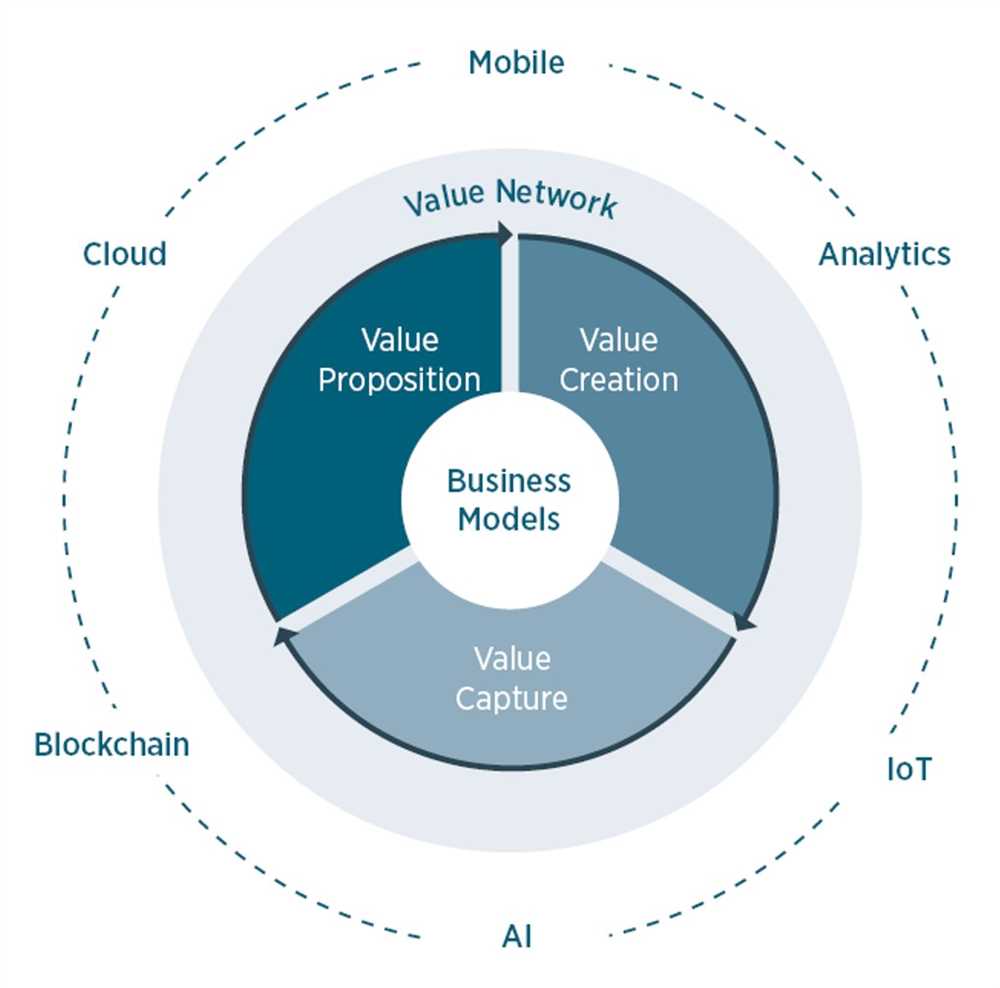
In today’s digital age, the business landscape is undergoing a major transformation. The rise of the internet and advancements in technology have paved the way for a more interconnected and globalized world. Traditional business models are being upended, and companies are being forced to adapt to survive in this new environment.
One of the key drivers of this disruption is the blur market. The blur market refers to the blurring of traditional industry boundaries as a result of technological innovation. In the past, industries were clearly defined and operated in separate spheres. However, with the advent of the internet and digital technologies, these boundaries have become porous, and companies from different industries are now competing with each other.
This shift has fundamentally changed the way businesses operate. Companies can no longer rely on traditional business models that were designed for a pre-digital era. They must embrace new ways of thinking and adapt their strategies to stay relevant in this rapidly evolving market.
One of the key challenges businesses face in this new landscape is the need to constantly innovate. With the pace of technological change accelerating, companies must be able to quickly adopt new technologies and adapt their business models. Those that fail to do so risk being left behind by more agile and innovative competitors.
The Rise of the Blur Market

In the digital age, traditional business models are being disrupted by the emergence of the blur market. This new paradigm is characterized by an increasing convergence of industries, blurred boundaries between sectors, and the rise of cross-industry collaborations. The blur market is transforming the way businesses operate and creating new opportunities for innovation and growth.
Convergence of Industries

One of the key characteristics of the blur market is the convergence of industries. In the past, industries were distinct and operated in separate domains. However, with the advent of technology and digitalization, the boundaries between industries have become increasingly blurred.
For example, the rise of e-commerce has blurred the boundaries between retail and technology. Today, tech companies like Amazon have disrupted the traditional retail industry and become major players in the market. Similarly, the rise of streaming services has blurred the boundaries between media and tech companies.
Cross-Industry Collaborations

Another important aspect of the blur market is the rise of cross-industry collaborations. Traditional industry boundaries are no longer limiting factors, and companies are increasingly partnering with organizations from different sectors to create innovative products and services.
For instance, automotive companies are collaborating with technology firms to develop self-driving cars, and healthcare companies are partnering with technology companies to leverage data analytics and improve patient care. These cross-industry collaborations bring together expertise from different domains and drive innovation.
New Opportunities for Innovation and Growth

The blur market presents new opportunities for innovation and growth. With industry boundaries becoming less defined, companies are able to leverage technologies, expertise, and resources from different sectors to create novel solutions that address complex problems.
Start-ups and digital-native companies, in particular, are well-positioned to capitalize on this trend. These agile organizations are not burdened by legacy systems and can quickly adapt to the changing market dynamics. They can easily collaborate with larger companies or disrupt traditional industries with innovative business models.
In conclusion, the rise of the blur market is reshaping business models in the digital age. With the convergence of industries, cross-industry collaborations, and new opportunities for innovation and growth, companies need to embrace this new paradigm to stay competitive and thrive in the evolving market landscape.
Adapting to the New Reality

In the digital age, businesses are facing a new reality characterized by constant disruption and rapid technological advancements. To thrive in this ever-changing landscape, companies must be willing to adapt their business models to stay competitive.
Embracing Innovation and Technology
One key aspect of adapting to the new reality is embracing innovation and technology. Companies need to stay at the forefront of technological advancements and be willing to invest in new tools and systems that can help them streamline operations, improve efficiency, and drive growth.
By integrating technologies such as artificial intelligence, big data analytics, and automation, companies can gain valuable insights, make data-driven decisions, and enhance customer experiences. Embracing innovation and technology also allows businesses to embrace new opportunities and expand into new markets.
Fostering a Culture of Agility and Adaptability
Another essential factor in adapting to the new reality is fostering a culture of agility and adaptability within the organization. This involves breaking away from traditional hierarchies and silos and promoting cross-functional collaboration and open communication.
Companies should encourage employees to embrace change and be willing to learn new skills. This might involve providing training and development opportunities, creating cross-functional teams, or implementing flexible work arrangements.
By fostering a culture of agility and adaptability, businesses can respond quickly to emerging trends and market shifts, allowing them to seize opportunities and stay one step ahead of the competition.
Emphasizing Customer Centricity

Adapting to the new reality also requires a shift in focus towards customer centricity. Customers today have more choices and higher expectations than ever before. Businesses need to understand their customers’ needs and preferences and tailor their products and services accordingly.
By putting the customer at the center of every decision, companies can create personalized experiences, build strong customer relationships, and drive customer loyalty. This includes leveraging customer data, implementing customer feedback mechanisms, and continuously iterating and improving products and services based on customer insights.
In conclusion, adapting to the new reality in the digital age requires embracing innovation and technology, fostering a culture of agility and adaptability, and emphasizing customer centricity. By staying open to change and constantly evolving, businesses can position themselves for success in the blur market.
What is disruption in the digital age?
Disruption in the digital age refers to the rapid changes and innovations that occur in industries and business models as a result of advancements in technology and the internet. It represents the transformation of traditional business models and markets due to the emergence of new technologies and digital platforms.
How is the blur market reshaping business models?
The blur market, characterized by rapid technological advancements and the convergence of different industries, is reshaping business models by forcing companies to adapt to new market conditions and customer expectations. Companies need to be agile and flexible in order to thrive in this environment, as traditional industry boundaries are blurred and new competitors emerge from unexpected places.
What challenges do businesses face in the digital age?
Businesses in the digital age face numerous challenges, including increased competition from startups and tech giants, the need for continuous innovation, adapting to changing customer expectations, and the threat of being disrupted by new entrants. Additionally, data security and privacy concerns, as well as the need for building digital capabilities, are also challenges that businesses need to address.
What opportunities does the digital age present for businesses?
The digital age presents numerous opportunities for businesses, including the ability to reach a global audience, access to big data and analytics for informed decision-making, improved communication and collaboration through digital platforms, and the potential for new revenue streams through digital products and services. Furthermore, the digital age allows for more personalized and targeted marketing, as well as the possibility of creating unique customer experiences.